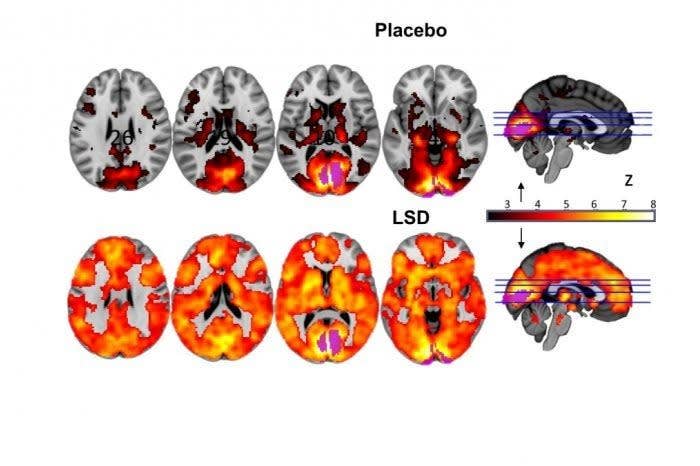
The findings of the first study ever on how LSD (lysergic acid diethylamide) affects the brain have been released and its results might help LSD join ketamine a.k.a. "special K" as a treatment for depression. One of the study's leaders, David Nutt, a neuropsychopharmacologist at Imperial College London, talked toNature about the groundbreaking study. According to Nutt, since the 1970s there have been studies of LSD on animals, but none on humans and the human brain.
The study, which was published in the Proceedings of the National Academy of Sciences, involved 20 participants, reportsNature. However, only data from 15 participants was usable, Naturewrites, because the others "moved too much" in the brain scanner.
When asked how this study was made possible legally Nutt explained the study was legal in the UK because LSD wasn't being used as therapy. He toldNature, "This was not a clinical trial: we gave LSD to volunteers who were already experienced with the drugs and took their brain scans over eight hours in the lab in Cardiff, in 2014."
As for why this study was done in the first place Nutt said, "For brain researchers, studying how psychedelic drugs such as LSD alter the 'normal' brain state is a way to study the biological phenomenon that is consciousness." He added that the study was also done to gather data in order to prove that LSD can be used as therapy for addiction or depression, as previously mentioned.
The study is also responsible for releasing the first images of the brain on LSD (seen in the photo above). Here's Nutt explaining the affects pictured.
"In one study in the Proceedings of the National Academy of Sciences we looked at blood flow in different parts of the brain using functional magnetic resonance imaging, fMRI, and electrical activity using magnetoencephalography1," said Nutt. "We found that under LSD, compared to placebo, disparate regions in the brain communicate with each other when they don't normally do so. In particular, the visual cortex increases its communication with other areas of the brain, which helps explain the vivid and complex hallucinations experienced under LSD, and the emotional flavour they can take."

The study also led to findings such as how listening to music affects a LSD trip. According to Nutt, communication between an area of memory storage in the brain and the visual cortex ("which processes information input from the eyes") lessens on LSD. However, when music is added to the mix that communication increases and is reportedly associated with hallucinations.
In the future Nutt toldNature there are plans to study how LSD can "influence creativity" and, "how the LSD state mimics the dream state."

